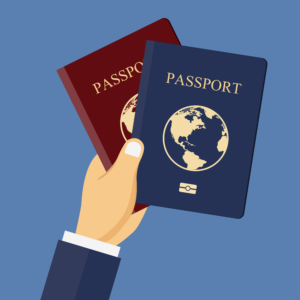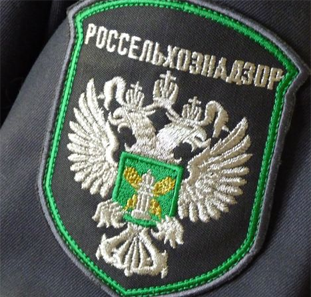Rosstat revealed how the number of Russians has changed in 2023

The permanent population of RUSSIA as of January 1, 2024 amounted to 146.204 million people, having decreased over the year by 243.8 thousand (minus 0.17%). This follows from a preliminary assessment by Rosstat published on January 25. For comparison: in 2022, the country’s population decreased by 532.6 thousand people, that is, the negative dynamics slowed down.
The presented data does not take into account statistical information for the Donetsk and Lugansk People's Republics, as well as the Zaporozhye and Kherson regions, the department clarified.
The preliminary assessment turned out to be more optimistic than the basic version of the demographic forecast of the statistical service (prepared in the fall of 2023), which envisaged a decrease in the population in 2023 by 368 thousand, to 146.08 million people.
Among the regions, the largest reduction in the number of permanent residents in 2023 in absolute numbers was recorded in the Kemerovo and Nizhny Novgorod regions (minus 20.2 thousand and 20 thousand people, respectively), as well as in the Saratov and Sverdlovsk regions (minus 19 thousand and 16 thousand . Human). The largest increase in numbers was recorded in the Moscow region (+59.2 thousand people), Moscow (+50.5 thousand people) and the Tyumen region (+41.8 thousand people).
The dynamics of the number of citizens consists of natural increase/loss (the number of births minus the number of deaths) and the net inflow/outflow of international migrants. Based on the results of 11 months of 2023 (the latest available statistics), natural decline amounted to 438 thousand people, decreasing by 19% compared to the same period last year (543 thousand). The birth rate in annual terms decreased by 3%, mortality - by 8%.
On the other hand, the migration increase over ten months (also the latest available data) amounted to 99.5 thousand people, of which 94% was a net influx from the CIS countries. However, the reliability of the migration data that Rosstat receives from the territorial bodies of the Ministry of Internal Affairs is worse than that of data on the vital movement of the population, experts pointed out. For example, the specifics of migration registration are such that “departed” are understood not as those who actually left the country, but as those removed from registration (when the expiration date of temporary registration arrives, migrants are automatically considered to have left for the country of their previous residence).
RBC Pro development program Master 52 skills in a year The development program is a convenient tool for continuous learning new skills for a successful career The trap of cognitive distortions: how a manager can get out of it How to force yourself to constantly move forward - nine simple tips Eight signs that indicate a confident person You everyone pisses me off: how to deal with negative feelings Good connections: what styles networking can be divided into If you are tired, downshifting is not the answer. How to save your career Business coach Matt Abrahams: don’t try to perform “correctly” What non-obvious reasons make you procrastinate “Anti-time management”: how to learn to manage everything How to memorize 30 pages at a time - advice from the Swedish Grand Master of Memory A leader from whom you can’t leaving: how to earn the loyalty of subordinates What tricks of legendary scammers will be useful to you during negotiationsIn 2021, the All-Russian Population Census took place, which significantly adjusted the country’s population indicators upward. In 2021 alone, as a result of the recount, the number of Russians increased by almost one and a half million people. At the end of 2023, Rosstat published population data for 2011–2020, revised based on the census, and in each of them it was increased by an average of 646 thousand people.
As a result of the census, the dynamics of the population also changed: so, if without taking into account its results at the end of 2021, under the influence of the pandemic, a record population decline of 613 thousand people was recorded since 2002, then the updated estimate reduced the figure to 476 thousand. The changes also changed indicators of a decrease in the number of Russians for 2020 - from 578 thousand to 504 thousand, taking into account the census, and in 2019, a population decline of 32 thousand people was replaced by an increase of 119 thousand.
Read together with it:
- Мировой рынок органических и натуральных продуктов вырастет до $84 млрд к 2033 годуПараллельно в России наблюдается увеличение интереса к высокотехнологичным пищевым продуктам, которые создаются с использованием функциональных добавок — стабилизаторов, эмульгаторов и натуральных консервантов. Как показывают опросы, 70% россиян готовы переплачивать за качество, причем 60% потребителей внимательно изучают состав перед покупкой. Растущий спрос подтверждается и данными по промышленн...
- Проблемы "Токаревской птицефабрики": Новый иск на 64,8 млн рублейДело рассматривается в арбитражном суде Тамбовской области, дата следующего заседания пока не назначена. Это не единственная проблема предприятия: ранее было принято решение о взыскании 104 миллионов рублей от поставщика зерна и есть другие незавершенные иски. "Токаревская птицефабрика" является одним из крупнейших производителей мяса птицы и яиц в России, с выручкой 44,4 миллиарда рублей за 2.......
- Торговля агропродовольственными товарами ЕС остаётся стабильной, несмотря на рост ценЛидером по объёму импорта стала Великобритания, на долю которой пришлось 27,6 млрд евро (+1,2 млрд евро, +5%), чему способствовали высокие цены на какао и шоколад. За ней следовали США и Швейцария. Напротив, экспорт в Китай сократился на 670 млн евро (-10%) из-за снижения спроса на зерновые, а экспорт в Таиланд сократился на 242 млн евро, отчасти по той же причине. Импорт агропродовольственной про...
- В Магаданской области более 10 человек заразились от больной кошкиВ Магаданской области более десяти человек заболели после контакта с больной кошкой. Сейчас они лечатся у дерматологов. Об этом рассказал министр здравоохранения области Александр Витько. По его словам, очаг заболевания находится в Хасыне. Сначала больную кошку погладили дети, потом от них заразились взрослые. Часть из них госпитализированы в круглосуточный стационар. ......
- Maduro has given himself new powers in the event of war with the United States.As the Venezuelan Vice President clarified, the decree will come into force in the event of external aggression, which could be based on US military intervention. Venezuelan President Nicolás Maduro signed a decree granting him additional security powers in the event of a military invasion of the country, Venezuelan Vice President Delcy Rodríguez announced, Finanzas Digital reports. She announced ...
- Yle узнал, что ЕС не планирует вносить российский никель в список санкцийЕС не планирует вводить санкции против российского никеля, несмотря на политические требования ужесточить рестрикции. Это связано с важностью металла для оборонной промышленности союза, сообщает Yle Европейский союз не собирается вносить стратегически важный для оборонной промышленности российский никель в санкционный список, пишет Yle. Так, в 19-м пакете санкций против России, который 19 сентября...





























































